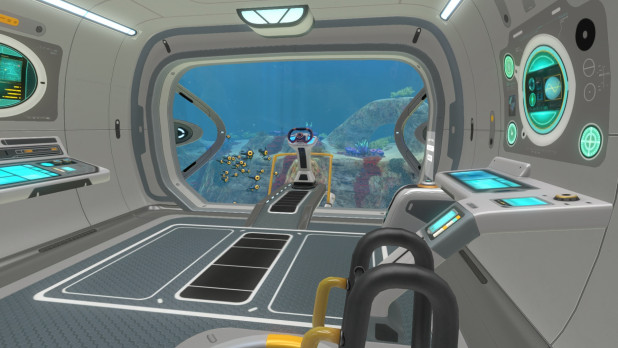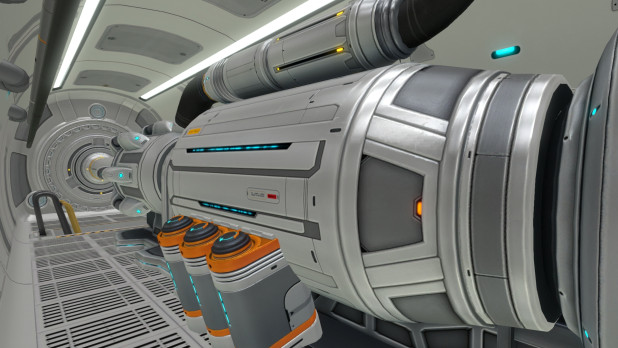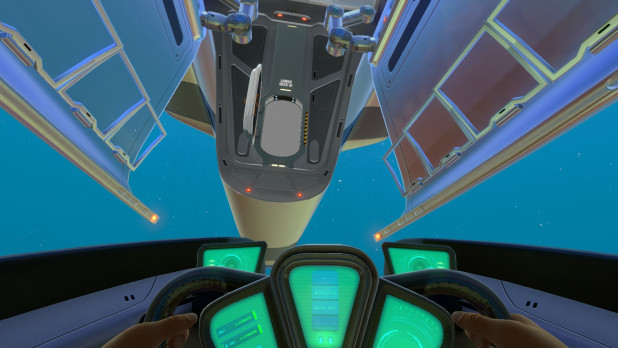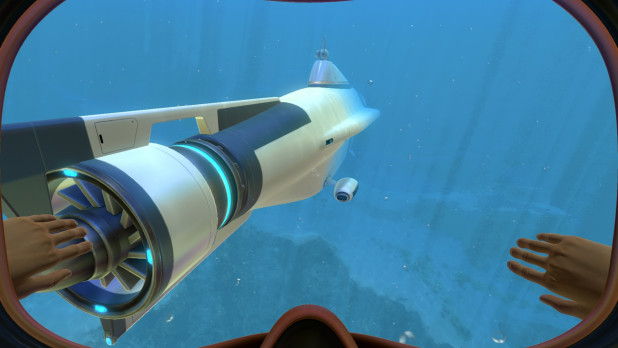
Feb 27, 2015
Subnautica - UWE.Strayan (NS2HD)

There are two big pieces of Subnautica news today. The first is that we've got a whole bunch of work-in-progress seabase stuff to show you. The second is that we've just released a new Subnautica update - It doesn't contain seabases, but it makes lots of additions and improvements to the game. Read on to find out more!

Subnautica development is following rough cycles of several weeks each. Every few weeks, we want to bring you something really awesome to play with. Last time, it was the Cyclops submarine.
If all goes to plan, the next big thing will be seabases, arriving some time in early March. It's very probable that timing will change, as is the nature of game development, but we are far enough advanced with our work that we want to show off some of the progress now. To get notified as soon as they are released, sign up to the Subnautica mailing list.

Before we dive further into seabases, let's talk about Subnautica Update 10, which we released today. It does not contain bases, but it does contain lots of important, less headline-grabbing work. For example, Charlie's new loot system is present, and that drastically changes how much of the game works. You will get this update automatically if you have purchased Subnautica on Steam. Because our development process is so unstructured, it's very hard to give you a controlled, authoritative list of changes.
To see absolutely everything that changed in this update, go to the Subnautica checkins and changes list. That page publicly records every change anyone on the Subnautica development team makes to the game. You can also check out the Subnautica Trello Board for a rougher approximation of changes. Some examples of smaller but still exciting things in this update include a working Dive Reel.

Many cave systems in Subnautica are complex, deep down, dark, and downright scary. Getting lost inside one means almost certain death from asphyxiation. The dive reel is a great way to limit the risk of getting lost. Once attached to a surface, it will spool out a dive line behind you. You can explore a cave with the line playing out, attach it to a surface in an interesting area, and then follow the line in and out of the cave. The dive reel is available to craft at the Fabricator.
Back to bases. For the last few weeks we've been doing intense research, experimentation, and design work on seabase concepts. Earlier prototypes involved near-cubic construction of seabase compartments, which could be stuck together in any number. Compartments could have flush windows, hatches for ingress & egress, and internal hatches which allowed individual compartments to be cut off from flooding. Much of the art was ripped from the Cyclops, or was simply basic 3D primitives - Not the sort of thing we would want to ship in the final game, but more than adequate to get a feel for how gameplay was working.

Using this prototype system was a little bit surreal. Subnautica is a game in which most time is spent swimming, or using a vehicle in the water. Unless you manage to find a certain remote island, there's no standing or walking on solid surfaces. With the prototype, we found ourselves standing on a solid deck, looking out a window at the ocean life passing by outside. It was very cool!

Because each compartment is on a grid, we were able to tinker with a power system, and per-compartment flooding. There was something off about the ‘feel’ of the prototype though – Big cubes being stacked on top of each other didn’t seem like something appropriate for an underwater environment.

Cue Cory’s magnificent concept for extensible, cylindrical base compartments. These compartments can be attached in sequence, joined at perpendicular angles, and stacked on top of each other.

They feature viewports for observing the ocean outside, and attachment points for installing equipment. At the moment, 3D art for these modules is not quite finished, but work is progressing well. The compartments need to be carefully crafted to ensure they can fit together in a variety of configurations. For example, T, 90-bend, X, and singular shapes.

The flexibility afforded by these compartments means that bases will be highly customisable. You will be able to build structures that fit your particular objectives, adapted to the surrounding sea floor terrain.

The cylindrical compartments have rectangular interior spaces. Flat walls make the installation of equipment (such as Fabricators) much easier.

We’ve experimented with a few construction methods for bases. The original prototypes used the PDA, with the player needing to open and close it every time they wanted to build a module. That turned out to be a bit clunky, and after a few iterations we’ve started to settle on the use of a revamped Builder tool. Base construction requires the crafting of a builder tool. Then, with that tool equipped, right click brings up a construction menu, and left click places & builds components.

Because Dushan is a genius, it takes no effort to join together complex base structures. Components will rotate and morph between different junction and bend types to match up with the layout you have placed on a base foundation.

Seabases are not yet ready for release: There are quite a few technical hurdles to clear, and more art to create, before they can be released. In the mean time, we hope you will enjoy playing with Update 10. It is a large and important update that touches on many aspects of gameplay, and fixes a few nasty crashes too. Find out when updates have been released by subscribing to the Subnautica mailing list, and see what the development team is up to with our wide variety of open development tools.






















